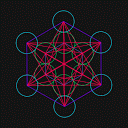My five year-old grandson has a constant question as he views his world: “Is it real?” How often do we ask ourselves the same question? Should we be asking it more often? I understand what he means. Today our children are exposed to the world of digital fantasy where all their favorite characters (in my grandson’s case) — those created by PBS or the fairy tale stories we knew from our own childhood, as he is not exposed to TV. Everything is visible in moving form and his constant question is a search for reassurance that these dancing animals, cute as can be and moving to the music in a very ‘human’ way are created by human beings. His search for reassurance becomes more serious when watching the tornado in Wizard of Oz or when encountering the villains in any story he watches. “Is it real?” An easy question to answer— or so it seems. Obviously all animated movies are not “real.” Neither are the stories of the fairy tales we hear— or are they? From her book, The Dreamer Awakes, Alice Kane suggests:
The dreamer awakes,
The shadow goes by
When I tell you a tale,
The tale is a lie.
But ponder it well,
Fair maiden, good youth:
The tale is a lie,
What it tells is the truth.
For adults too, reality is not simple to define. Quantum physics describes a world in which apparently solid objects are in fact composed of molecules in constant motion. Our presence as observers can be shown to alter the outcome of events. Tiny fragments of holographic film contain the entire image of everything visible in the original whole. Fractal designs confound us as they repeat themselves into infinity in objects as common to us as snowflakes or leaves. We are probably familiar with those intricate and colorful designs— apparently two dimensional— until we hold them close to our eyes and start to move our heads slowly backwards and suddenly discover a three dimensional object hidden in plain sight.
Fiction writers tell us that there are only some two dozen plots on which all stories are adaptations, most of them based on the mythic hero’s journey. Mythologists show how archetypal themes and characters are alive within us and on whose stage we create our individual life dramas. Jean Houston’s definition of myth as something that never was and always is seems to me profound.
As children lead the way, it may serve us well to constantly ask ourselves the same question my grandson does: “Is it real?” The world we have created and believe to be true— a world of Bible as literal, the inevitable separations of individuals and nations as “better than” or “less than” based on race, religion, nationality or creed— is it real? Ponder and decide.
